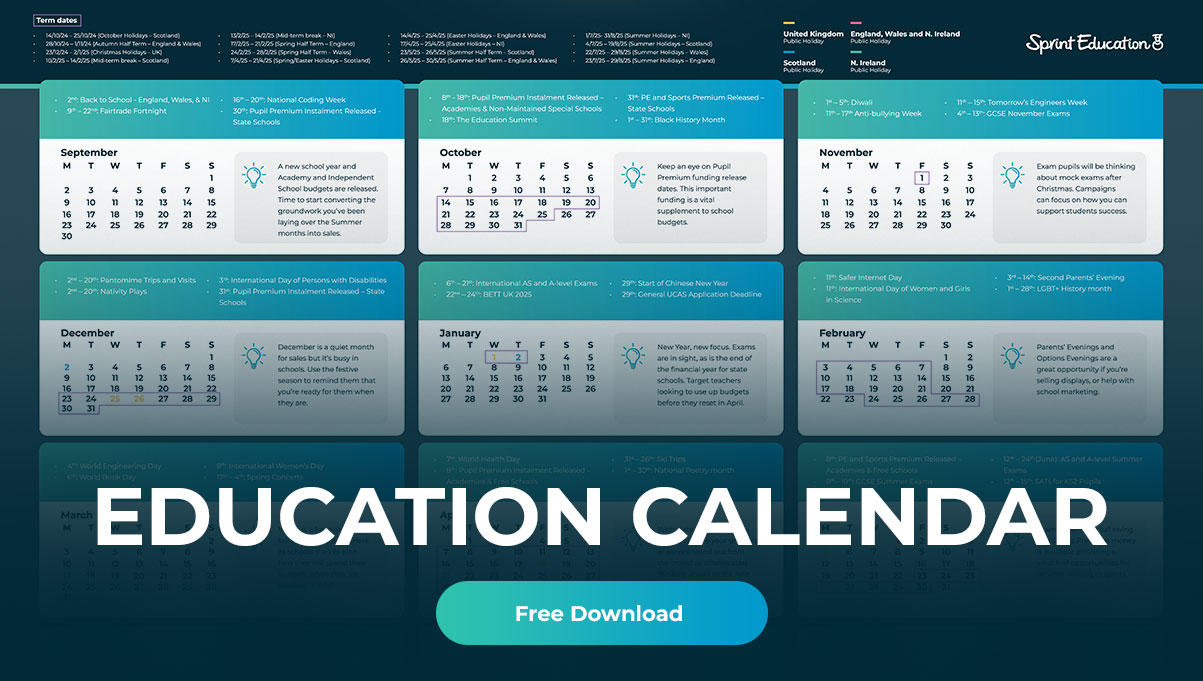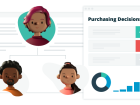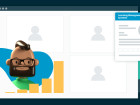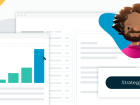The Top 3 EdTech Needs in Schools (and How You Can Transform Teachers' Lives)
The Top 3 EdTech Needs in Schools (and How You Can Transform Teachers' Lives)
Revealed: What teachers think are the main benefits of EdTech and how you can engage with their key needs.
Revealed: What teachers think are the main benefits of EdTech and how you can engage with their key needs.
If you’re an EdTech provider, or provide a service that includes digital elements, you may have already read our Promoting EdTech and Software to Schools and Teachers (10 Game-Changing Insights) paper. But what do you know about how schools are using EdTech, and what teachers think about it?
In our State of Selling to Schools survey, we asked educators about how their schools were embracing EdTech developments and which forms of EdTech they found the most beneficial to their role.
Almost two-thirds of educators (62.3%) said they believe their school embraces new EdTech developments. This demonstrates a considerable appetite for EdTech in schools and that educators are convinced that making the most of new technology has a positive impact.
What kinds of EdTech do teachers find the most advantageous to use? The answer reveals the main needs of teachers. The top three most popular categories are: Communications (41.6%), Learning Management Systems (35.8%) and Formative & Summative Assessment (31.5%).
Addressing school needs is step one in this Government report from 2022: Implementation of Education Technology in Schools and Colleges. This detailed report contains six steps all schools should follow when making EdTech purchasing decisions.
Let’s take a closer look at what these types of EdTech do to fulfil the needs of teachers, how they can meet those needs, and why you should showcase the capacity of your service to meet each need too.
Communication 41.6%
By some distance, using EdTech to support communication is the most popular use, which reinforces not only how commonplace EdTech is in schools, but how easy it is to understand and implement. Communication EdTech includes a vast array of different apps and software packages that can encompass everything from one-to-one correspondence, to getting a message across to learners in class. We can divide communication-based EdTech products and services into five main needs:
1. External Communication: Apps or programmes that provide a means of communicating easily with external stakeholders, such as parents and guardians. They enable the easy dissemination of information to parents/carers for the whole school or a specific group. Teachers can share upcoming term events, provide instant notifications about school closures, and even share photographs and updates of what’s happening in their classes through a straightforward and secure tool.
2. Internal Communication: These are EdTech solutions that address practical communications between teams and departments within schools; for example, tools that enable video conferencing, timetabling of classes, school space booking and direct messaging. Apptavi is one such example. They offer timetabling and assembly functions, making it easier for teachers to organise and communicate these tasks.
3. Interpret Text and Language: Translations tools were among some of the first pieces of EdTech developed. Today, schools will use modern foreign languages tools such as Duolingo or Drops to provide course content, or test students’ understanding. On a more fundamental level, they can help when communicating with EAL students.
4. Refine and Edit Language: Composing, reviewing, and editing text are the most commonly used examples of editing tools. For instance, Grammarly can streamline a teacher's workload, and provide students with the means to independently review their own writing, supporting the clarity of their written communications.
5. Make Language Accessible to Diverse Learners: A variety of literacy comprehension tools support classroom communication. For example, text-to-speech tools can assist students with a wide range of reading barriers including dyslexia, and other tools can even provide a live translation function for supporting EAL learners.
How can communication tools meet these needs? It is no wonder this area of EdTech was our most popular response; the role of a teacher is all about communication. During my teaching career, I could begin the day by responding to emails from parents/carers and colleagues on Outlook. Then, I could jump on Google Classroom to write a post reminding a class about a room change.
In the classroom, my students used Google Docs to correct errors in their extended paragraph writing. As they submitted their work, I provided instant feedback by adding digital comments. During the same class, I had the ability to introduce a student with limited vision to Immersive Reader in Microsoft Word, to make accessing text easier through text-resizing, read-out-loud buttons, and visual cues.
As a teacher, automating or compartmentalising specific forms of communication via simple-to-use apps would save me time. It kept my email inbox clearer of general requests, so I could focus on the most urgent and most important correspondences. In contrast, not having access to slick communications workflows would slow down my day and take my focus away from learning.
As a parent, I cannot imagine what it would be like trying to keep up-to-date with my daughter's progress at her primary school without using an app, like Class Dojo, to access all of this essential information in one place. Effective communication EdTech brings families closer to schools just as much as it helps teachers to streamline their workload.
Showcase your capacity
Are you currently highlighting the communications benefits of your service?
Do you identify and demonstrate how your EdTech meets any of the five communications needs above? In your marketing, share why teachers should use your tool to reduce their workload, build connections with parents, and fulfil their needs.
Teaching is all about communicating, so demonstrating how to make communication seamless will make your solution a priority for schools.
Learning Management System (LMS) 35.8%
Over a third of teachers see the benefits an LMS can provide. These software tools allow teachers to create, share, and report on learning. Often seen as the ‘digital version’ of a physical classroom but with added functionality, these tools address four key needs:
1. Course Creation and Organisation: Teachers can efficiently create, organise, and structure their courses in one place. They can upload lesson activities, resources, and notes ahead of their class. Learning pathways can be created to sequence lessons and add assignments.
2. Content Delivery: Not only can teachers prepare for lessons ahead of time, but they can react to teachable moments, and adapt to the needs of their learners. During a lesson, teachers can immediately upload a file or multimedia resources, or share ideas with students. Tools such as Canvas are effectively a live portal for student learning.
3. Communication and Collaboration: An LMS facilitates interactions between teachers and students, using features like discussion boards, chat functions, and comment systems to allow students to ask questions and discuss topics. Google Classroom is a good example, where tasks can be easily split between groups of students to collectively fulfil the outcome.
4. Assessment Management and Progress Tracking: Automation of administrative tasks is very popular among teachers. An LMS can support the collection, checking, and recording of grades - a big time saver for teachers. Teachers can provide feedback, track students' progress, and extract data to gain insights.
How can Learning Management Systems meet these needs? In my teaching, Learning Management Systems were indispensable, and completely streamlined each stage of the learning process. During the pandemic, many teachers also found this to be the case, with 51% of State Primary and 82% of State Secondary teachers directing pupils to digital platforms for online learning, usually via an LMS.
I have used both Google Classroom (and, to a lesser extent, Moodle) since 2015. The benefits I saw back then have become part of everyday teaching practice.
For instance, Learning Management Systems have simplified the basic need to share resources with students. Before, a teacher would need to photocopy a class set, and hand it out. Alternatively, they would write an email, attach the resource, add the email addresses for each of their students, and send it - without a means to check whether students received it.
Not anymore! With tools such as Google Classroom, Blackboard, and Canvas, teachers can simply jump on the relevant page and create a quick post, and it’ll be automatically shared with the whole class. They can even categorise the new resource to make it easy for students to come back to, and the learning can be extended as students add questions through comments via the platform.
Teaching approaches such as differentiation, or the increasingly more popular adaptive learning method, are easier to set up when you can tailor what students have access to in class.
Before, a question communicated verbally was easily forgotten. But with an LMS, the question can be added online, and students can come back to it later on to contemplate during independent learning, extending the impact of that teachable moment.
Showcase your capacity
Does the service you provide meet any of the needs above? If so, are you illustrating this in your marketing?
An LMS can provide so many benefits, but often the data-crunching and schoolwide approach it enables is front and centre. Yet to teachers right now, how your LMS simplifies their workload is going to be how you win their hearts and minds.
Formative and Summative Assessments 31.5%
Assessment EdTech tools, in short, enable student knowledge or skills to be measured, be this for low-stakes formative assessments to review learner progress or higher-stakes summative assessments to demonstrate learning outcomes.
We’ll look at each in turn:
Formative Assessments are the check-ins teachers use throughout the learning process to monitor student attainment, and to inform future learning. This area of EdTech supports three key areas:
1. Engagement and Interaction: Reviewing knowledge acquired can be a less thrilling learning area, but popular examples can gamify knowledge reviews, making them into an interactive shared classroom experience. Quizzing tools such as Kahoot, Quizizz, and Gimkit can be used to test knowledge acquisition through the stealth of competitive and cooperative games.
2. Real-Time Feedback: Formative assessment EdTech tools can provide immediate feedback to teachers. This allows teachers to gauge student understanding and progress in real-time, meaning they can identify areas of strength and improvement, and make timely instructional adjustments to support comprehension.
3. Data-Driven Decision-Making: These tools generate data on student performance, enabling teachers to make informed decisions. Individual and classwide patterns can be spotted, meaning areas that require additional intervention are targeted. Such an approach enhances instructional planning and supports evidence-based teaching.
Summative Assessment is all about supporting educational outcomes, such as administering assignments and conducting examinations for SATs, GCSEs, and A-Levels. They address three key needs:
1. Efficient Curriculum-Aligned Evaluation: Summative tools provide standardised formats and automated scoring to streamline evaluation. They are designed to align with specific curriculum standards, creating a structured framework for assessing learning objectives.
2. Objective and Reliable Assessment: With some assessments allowing automation of grading, the accuracy of reporting is increased. Many tools have plagiarism-checking functions that can scan student submissions, and ensure it is their own work.
3. Data Analysis and Reporting: Extracting reports and identifying trends in student performance benefits teachers and schoolwide management. Summative assessment tools enable this process, and allow for performance data to be easily shared with relevant stakeholders, ultimately providing benchmarks by which to measure and support student success.
How can assessment tools meet these needs? Advances in EdTech in the last decade alone have made assessing student knowledge and progress more of a joy.
In my classroom, students would constantly ask me, “Can we do a Kahoot, sir?” The content review became a highlight that added variety, instead of a repetitive chore.
In my experience, tools that do not have a game function still embellished the experience for students. For example, EdPuzzle makes use of video content by layering it with pop-up questions and discussion prompts that can be completed in unison as a class, or individually at students’ own pace learners. Nearpod and Peardeck display learning content, but have interactive functions to make the learning more engaging and to test comprehension as well.
When it comes to summative assessments, EdTech tools are in some ways a sleeping giant, especially for examinations, as digital examinations need to be approved by governments and exam boards. OCR and Cambridge International exam boards recently began trials for on-screen mock exams in Computer Science, English, and History.
Countries such as Finland, New Zealand, and Wales already make use of on-screen assessments in different scenarios. In England, however, with concerns around cheating and plagiarism heightened by AI advancements, a wider roll-out has not yet arrived. When it does, though, the tools are there to meet the need.
Showcase your capacity
If your digital tool can support knowledge reviews in any form, you should be speaking about its power to do so.
Assessment tools are not just about being aligned with standards and the national curriculum; they also monitor student progress, engage learners, analyse data, and report to stakeholders. Make your tool’s benefits clear to educators, and they’ll be unable to refuse!
What next?
Earlier in this blog, I mentioned the Government report Implementation of Education Technology. The report has six steps schools should take when considering which EdTech providers to purchase from. If you are not already familiar with these steps, it is well worth investing some time in reading them.
If you want to start showing schools how you can meet their EdTech needs, explore the potential of Campus, our all-in-one education marketing and sales suite.
Campus wins you more business from schools by giving you access to all the education marketing data, intelligence, and built-in tools that are a must-have for any education business.
Build targeted contact lists, create winning emails, manage every aspect of your teacher sales funnel, and ultimately sell more to schools!
Click here to arrange your free demo, or contact us at info@sprint-education.co.uk or on 01684 297374.
Tags
Education Marketing
Emailing Software
Marketing to Schools
Marketing to Teachers
Selling to Schools
Selling to Teachers
Similar Articles
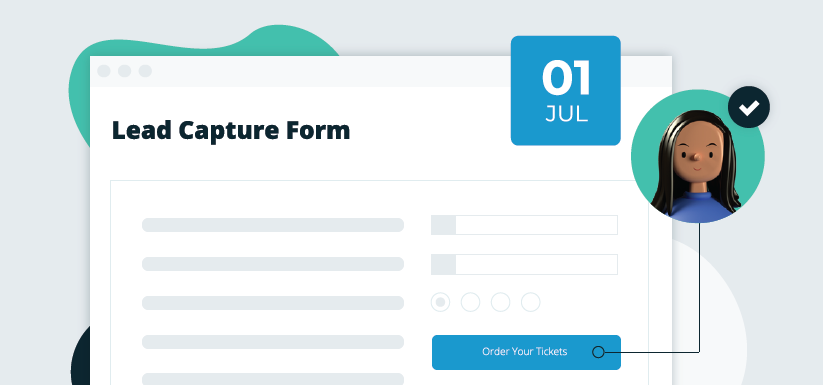

Selling to Schools in the Summer Term
Explore the insights of over 3,000 school staff and understand how to shape your education marketing during school's biggest spending period.
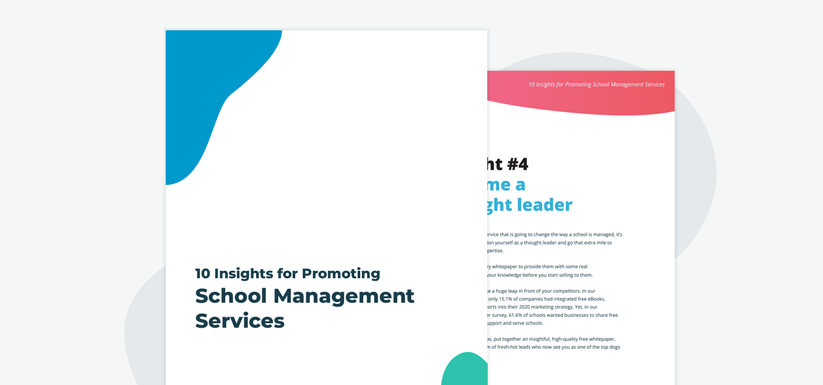

Marketing School Management Services to Schools
Learn 10 game-changing insights especially for school management service providers to enhance your education marketing campaigns when emailing schools.


Expert marketing to schools support and solutions
Expert marketing to schools solutions
Email Head Teachers, Teachers, and Staff Inboxes
Email teachers and staff inboxes
Sell More to UK and Global Schools and Colleges
Sell more to schools and colleges

















